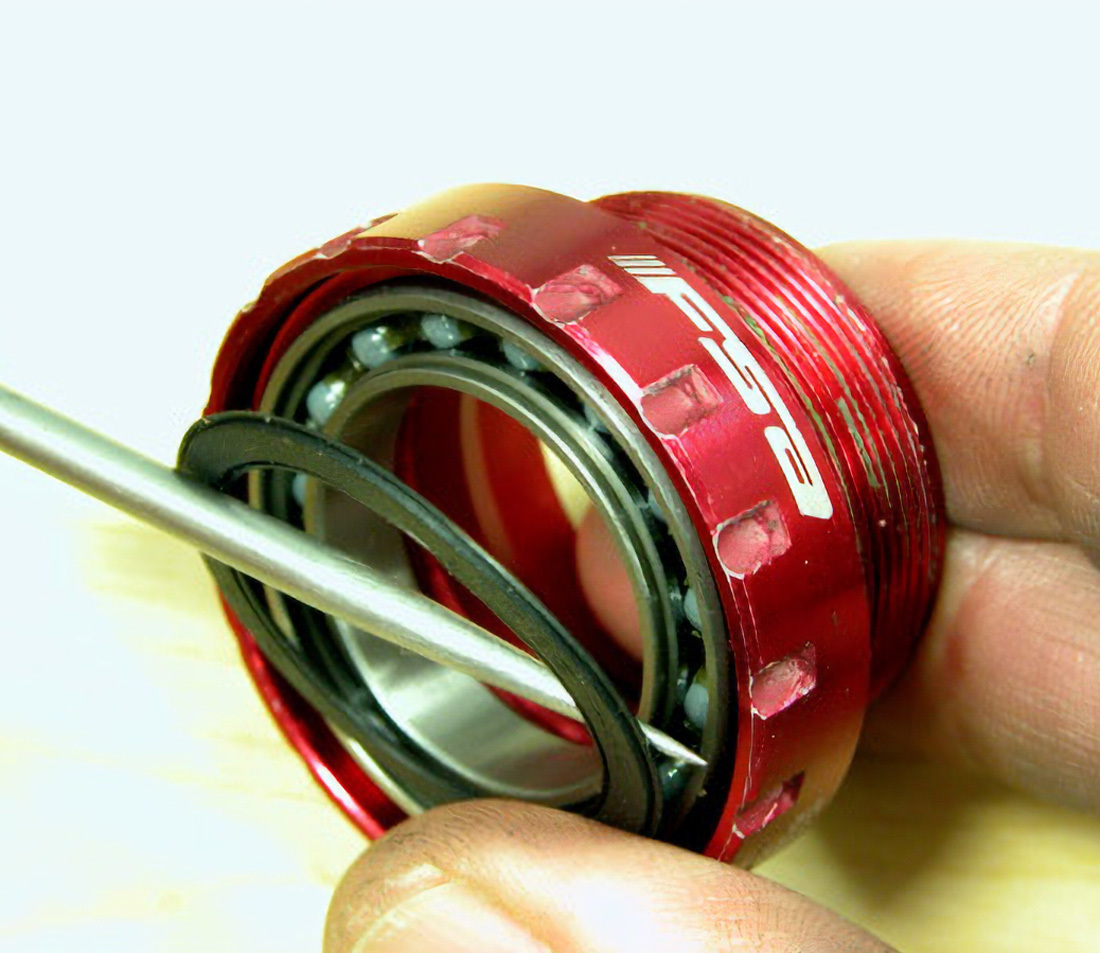Ceramic Bearings
This article will discuss the specifications and proper servicing of ceramic bearings.
About Ceramic Bearings
Ceramic bearings are being seen on bicycles and other hobby equipment, such as fishing reels, slot cars, and roller blade wheels. Ceramic bearings are available in most sizes of bicycle cartridge bearings. The cartridge bearings usually use steel inner and outer races, with ceramic bearings between. Ceramic bearings can also be purchased as loose ball bearings (Figure 1).
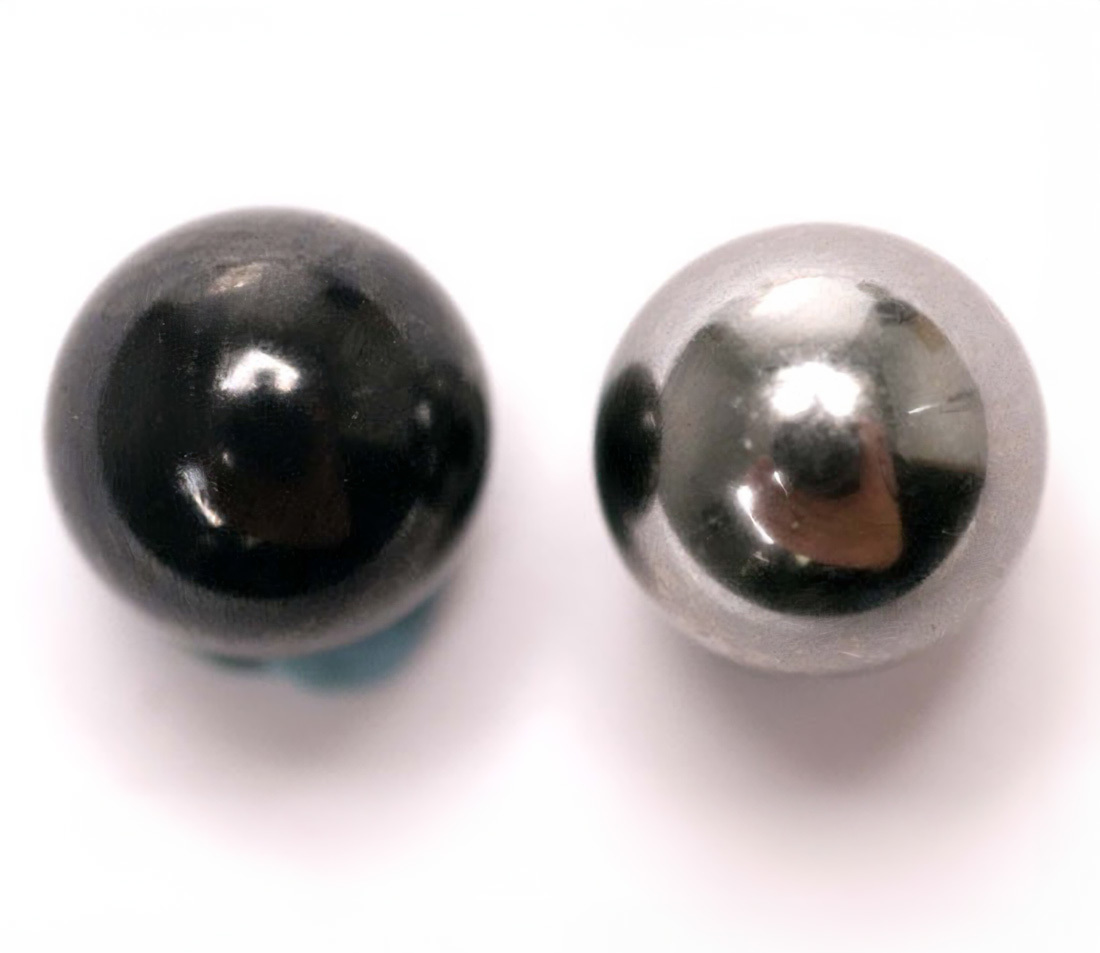
The ceramic bearing has found uses in industrial applications where there is high speed, high load, and, consequently, high temperature. Bicycle riding simply does not result in high load, speed or temperature. A bike moving at 80 kilometers per hour (about 50 mph), will have hubs that rotate about 11 revolutions per second. An engine crank shaft, however, may turn at over 100 revolutions per second.
The quality of bearing can be defined by various ratings, such as the rating of ball roundness. A high quality steel ball bearing is consider grade 25. The grade number refers to the tolerance per millionth of an inch. A grade 25 is accurate to 25/1,000,000 of an inch. Less expensive ball bearings may be grade 300, which are less round, at 300/1,000,000 of an inch. Ceramic bearings may be grade 5, which is a rounder ball bearing. The importance of roundness, however, should not be overrated, as the bearing surfaces the balls run on are unlikely to be as accurate as the grade of the ball bearing. The ball bearing is typically not the “weak link” in the system.
Another aspect of the bearing is the property of the material. There is a rating for hardness called the Rockwell scale. Steel uses what is called the Rockwell C scale, and ball bearings are of course hard. This hardness allows them to rotate and not wear, at least for a while. The bearings surfaces of the hub cone and cup typically have a Rockwell C rating of 55 to 60. A steel ball bearing is likely to be over a Rockwell C of 60. A ceramic ball bearings can be a Rockwell C of 75, much harder than the steel races. This should provide good wear features for the entire bearing system, not simply the ball bearing itself.
The surface finish of a bearing is also important. Ceramic bearings are not necessarily smoother than steel balls. In the image below, a Grade 25 steel bearing is magnified 200 times (Figure 2). Grind marks are apparent. In the next image, a ceramic bearing also show grind marks (Figure 3).
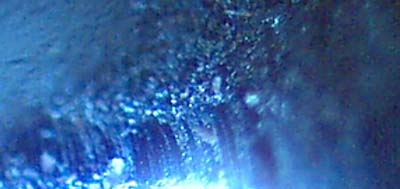
Figure 2. Steel ball bearing outer surface viewed at 200X

Figure 3. Ceramic ball bearing outer surface viewed at 200X
The ceramic material used in a ball is made of a grain structure, similar to a steel ball bearing (Figures 4 and 5). An important property of any material is “stiffness.” This is a measure of how it deflects under stress or load, and the rating of this property is called the “Modulus of Elasticity.” A steel bearing will be perhaps 30,000,000 pounds per square inch. Ceramic bearings made from silicon nitride can have a Modulus of Elasticity of 47,000,000 pounds per square inch. This extra stiffness means the balls will deflect less under load and this will transfer energy better, proving a (small) savings. While the ceramic ball is about one-half the weight of a steel ball the same size, it is the stiffness that is important in their performance.
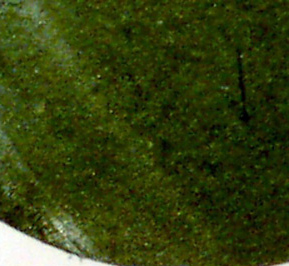
Figure 4. Grain structure inside of a split ceramic ball bearing at 200X
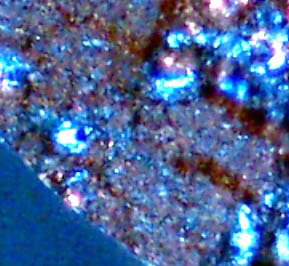
Figure 5. Grain structure inside a split steel ball bearing at 200X
It terms of service, there is no special procedure or process. Bearing can be cleaned and lubricated as normal. Loose ball bearings are installed and adjusted as with steel balls. Install bearings and fully cover with grease. Park Tool PolyLube™ is compatible with both steel and ceramic bearings (Figure 6). Park Tool HPG-1 has even better adherence and lubrication characteristics that make it a perfect choice for ceramic bearings.
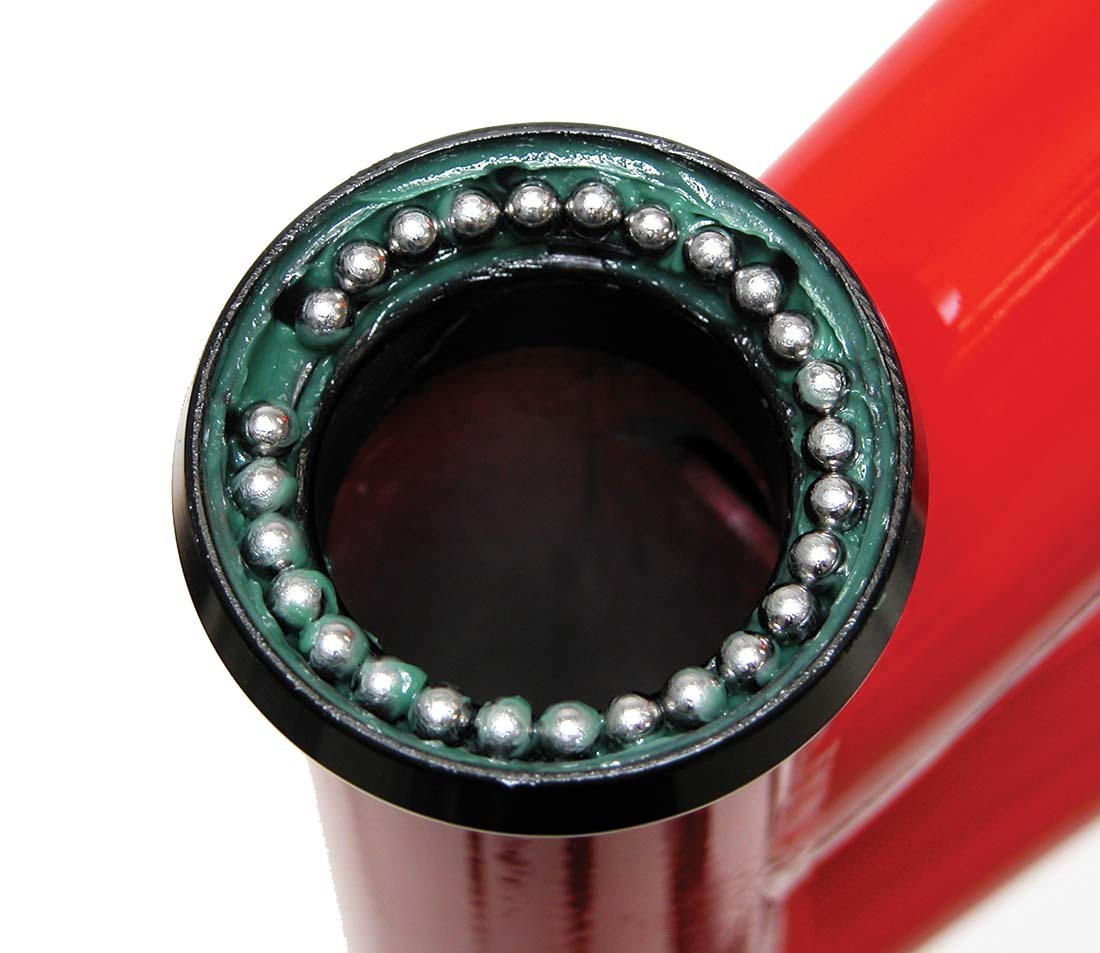
With cartridge bearings, it is possible lift the seal and check the grease. Remove the spindle or axle first. For many cartridge bottom bracket bearings, it is necessary to carefully remove the a plastic shield over the bearing. Use a seal pick to lift the rubber seal from the inner edge (Figure 7). Wipe the bearing clean with a rag and then add grease. Press seal into place.
